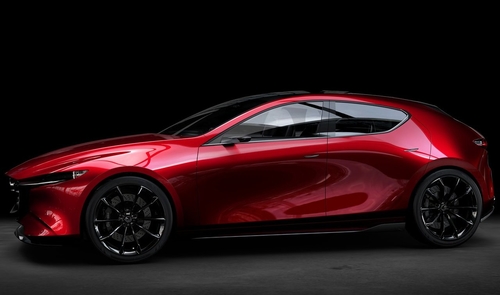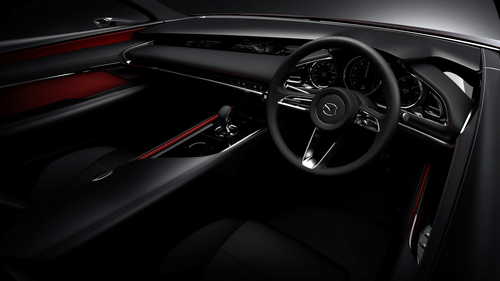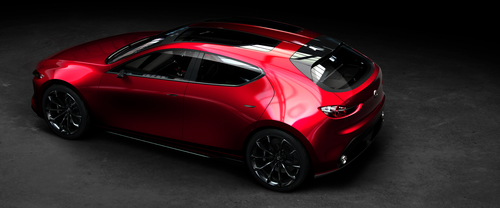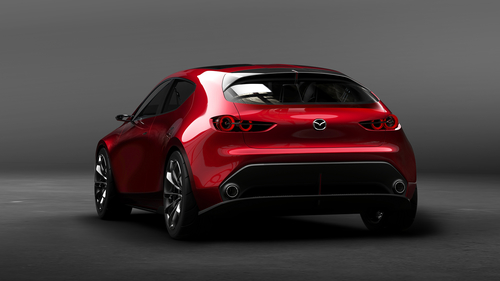|
After viewing the Kai, you’ll need a moment to collect yourself, but following that, the first thing you’ll notice is how there are no creases or hard lines anywhere. This is no bland jellybean, however. This is a fierce-looking 5-door compact somehow inspired by both water and fire. It’s clearly designed to spark a passionate response, and if the crowds at the Tokyo Auto Show are any indication, Mazda has got a winner on their hands.

The exterior is a clear evolution of Mazda’s Kodo design language, most recently used on the current CX-9 and CX-5. The compact hatchback proudly displays a long front end with a slanted hood, a serious overbite, and a signature U-shaped grille detail that cuts into the headlights. The rear looks wide and features fantastic, angry-looking taillights and dual exhaust outlets.
The concept has a wheelbase 50mm longer than the current Mazda3 which should translate into more interior room and superior ride dynamics. The production version will ride on Mazda’s upcoming Skyactiv Vehicle Architecture, which is engineered to provide “more comfortable and less tiring driving” and “the ultimate connection between driver and car”.

Under the hood will sit Mazda’s revolutionary Skyactiv-X gas engine which combines traditional ignition of the fuel mixture via spark with diesel-style compression. This represents a major breakthrough for internal combustion engines and is said to achieve an incredible 20 to 30 percent improvement in fuel efficiency. Some engines in the Skyactiv-X family are to be fitted with a supercharger and, like many others, we hope one of those variants will find its way into the next Mazda3 as part of a possible Mazdaspeed3 “hotrod” model.
The smooth, simplicity of Kai’s exterior translates to a “less-is-more” interior as well. Clearly drawing some inspiration from the RX-Vision concept, Kai’s interior has a driver-oriented cockpit that features a high centre console and a simple, elegant dashboard. There’s a perfect horizontal symmetry inside, with the driver position having nothing but a minimalist three-gauge cluster and several simple ventilation grilles in view.

The interior follows a similarly simple, straightforward design intended to keep the driver focusing on the road and connected with the car. There is a noticeable lack of a tablet-style screen inside, and in its place, the Kai has a massively wide digital screen embedded into the dash that stretches from the centre stack into the area ahead of the passenger seat.
The Kai’s massive 20-inch alloy wheels, four bucket seat arrangement, thin side mirrors and retractable door handles will likely not see production, but we certainly hope little else changes. If the next Mazda3 does, in fact, wear the body of the Kai Concept, there’s likely going to be lines around the block to buy one.

Stay tuned to these pages for more exciting news on the evolution of the Kai Concept and its successor, the all-new 2019 Mazda3.
|